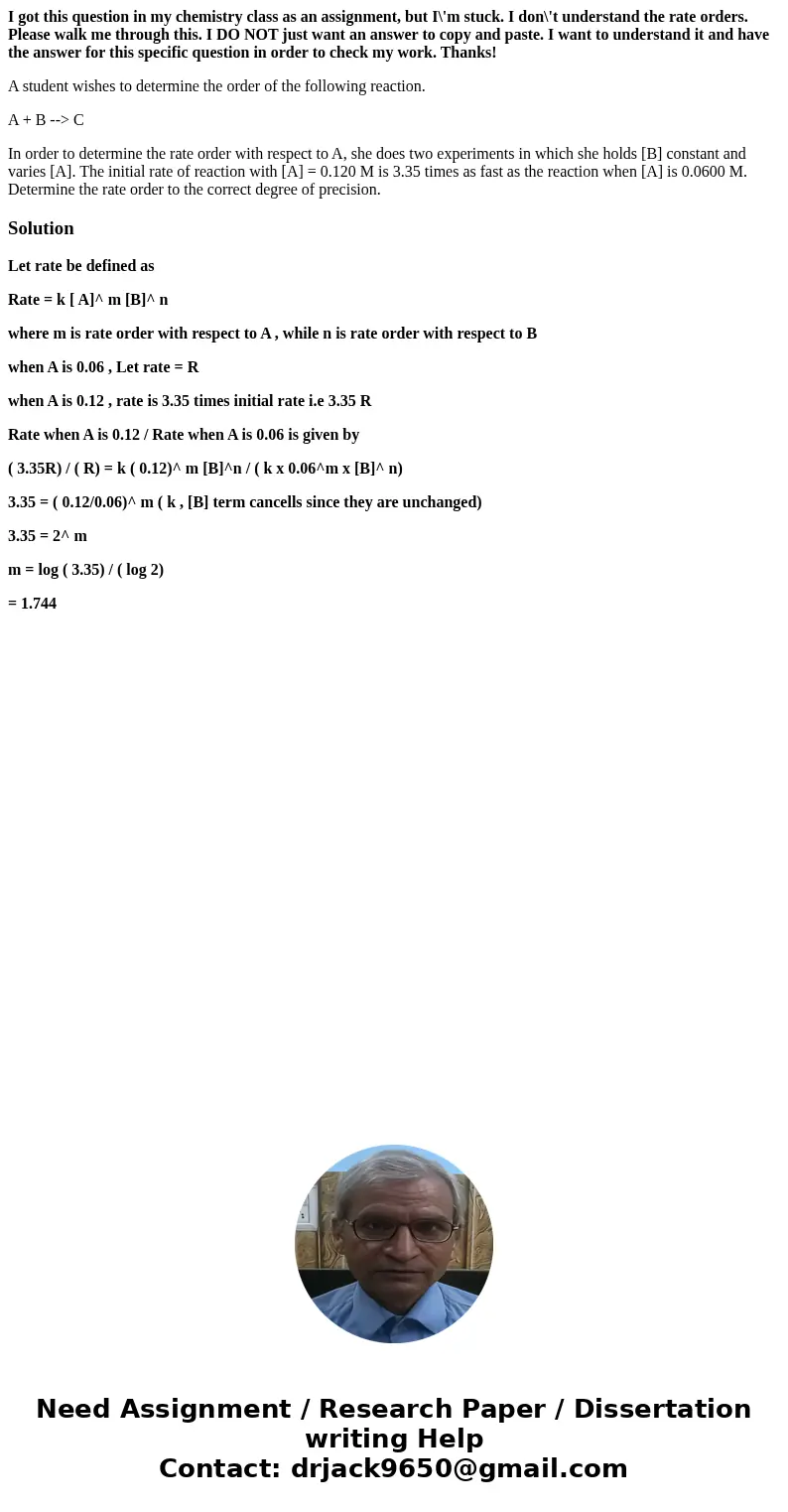I got this question in my chemistry class as an assignment b
I got this question in my chemistry class as an assignment, but I\'m stuck. I don\'t understand the rate orders. Please walk me through this. I DO NOT just want an answer to copy and paste. I want to understand it and have the answer for this specific question in order to check my work. Thanks!
A student wishes to determine the order of the following reaction.
A + B --> C
In order to determine the rate order with respect to A, she does two experiments in which she holds [B] constant and varies [A]. The initial rate of reaction with [A] = 0.120 M is 3.35 times as fast as the reaction when [A] is 0.0600 M. Determine the rate order to the correct degree of precision.
Solution
Let rate be defined as
Rate = k [ A]^ m [B]^ n
where m is rate order with respect to A , while n is rate order with respect to B
when A is 0.06 , Let rate = R
when A is 0.12 , rate is 3.35 times initial rate i.e 3.35 R
Rate when A is 0.12 / Rate when A is 0.06 is given by
( 3.35R) / ( R) = k ( 0.12)^ m [B]^n / ( k x 0.06^m x [B]^ n)
3.35 = ( 0.12/0.06)^ m ( k , [B] term cancells since they are unchanged)
3.35 = 2^ m
m = log ( 3.35) / ( log 2)
= 1.744

 Homework Sourse
Homework Sourse